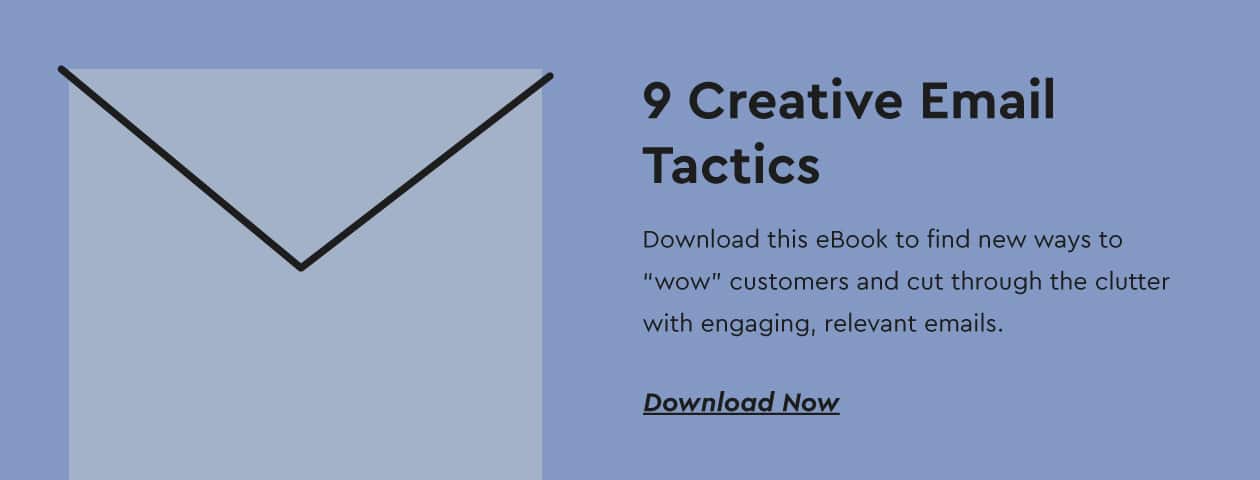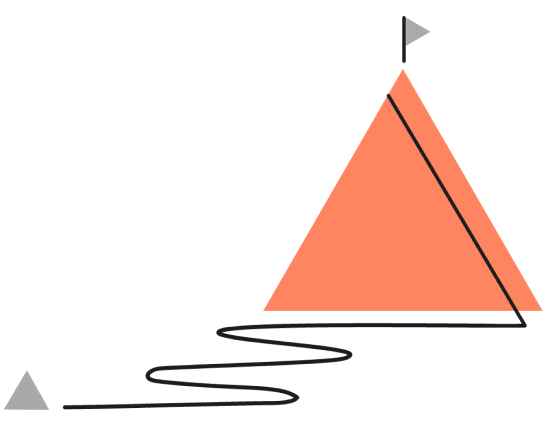What is a CRM Database?
A CRM database is a software platform that supports a company’s Customer Relationship Management (CRM) strategy. These databases range in sophistication, from basic data collection about customers or leads, and organization to advanced functions like customer data analysis, segmentation, and next-best action recommendations. CRM databases can include additional components to enhance functionality depending on the company’s needs and industry.
Having a CRM database is important for brands to understand who their customers are at a granular level and treat each one according to their wants and needs. By consolidating customer data, brands can access customer behavior and preferences and deliver personalized, relevant, and powerful messages to create effective customer experiences. Ultimately, a CRM database gives brands the power to drive customer loyalty, satisfaction, and growth.
Download Now: 9 creative email tactics
What Data is Stored in a CRM Database?
A CRM database stores various data types to optimize customer relationships and marketing efforts. See below the types of data stored in a CRM database and a few examples of each:
Personal Details:
- Name: First name, middle name, and last name.
- Contact Details: Email, phone number, and home address.
- Demographic Information: Age, gender, date of birth, and marital status.
- Social Media Profiles: Links and handles for social media accounts.
Purchase History:
- Transaction Records: Details of past purchases, including product types, quantities, prices, and dates of purchase.
- Order Frequency: How often the customer makes purchases in a pre-determined time frame.
- Lifetime Value (LTV): The predicted sum a customer will generate for a business (according to their behavioral history.)
Behavioral Data:
- Website Activity: Pages visited, time spent on site, and navigation patterns.
- Email Engagement: Open rates, click-through rates, and response rates.
- App Usage: Frequency and duration of app use, features used, and in-app purchases.
Engagement Levels:
- Communication Preferences: Preferred communication channels (Email, SMS, mobile, etc.)
- Feedback and Reviews: Customer reviews, survey responses, and feedback forms.
- Loyalty Program Data: Points earned, redeemed, and membership status.
Customer Support Interactions:
- Support Tickets: Records of customer service requests, issues raised, discounts given, bonus usage, and more.
- Chat Logs: Transcripts of live chat interactions with support agents.
Marketing Campaign Data:
- Campaign Participation: Marketing campaigns the customer has received and their responses.
- Promotional History: Offers and discounts provided to the customer and their usage rates.
Transactional Data:
- Payment Information: Payment methods used, transaction IDs, and billing details.
- Return and Refund Records: Information on returned products, reasons for returns, and refunds issued.
Geographical Data:
- Location Information: Customer locations, including country, state, city, and postal codes.
- Geolocation Data: Data from GPS or mobile devices indicating physical locations visited. (Read more about geofencing and location-based marketing.)

CRM Database Integration
Optimove integrates data to create a CRM database for marketers. When brands start using Optimove, they begin a data integration process usually managed by an in-house Data Engineer.
Optimove ingests unlimited historical data and real-time data processing to create customer profiles, build segments, and feed AI and ML models. This data is then stored in a CRM system using a structured and organized approach to ensure it is accurate, accessible, and actionable.
CRM Use Across Various Departments
A CRM database offers significant benefits in numerous departments across the organization by providing a holistic view of customer data, enabling better decision-making, improved customer experiences, and increased operational efficiency. However, some departments (predominantly Marketing and sales) use it more than others.
Marketing Department:
Marketers benefit significantly from using a CRM database in several ways. They can create highly personalized campaigns and segment customers into precise target groups, leading to efficient marketing efforts and successful results. Actionable and easily accessible insights into customer journeys and campaign performance help refine strategies.
Customer Service Department:
Customer service teams benefit from access to a unified customer profile or single customer view, accessible in a CRM database like Optimove. A single customer view is essential for organizations to understand and interact with each customer in the most personalized and effective ways. This helps in resolving issues they may have quickly and effectively. Additionally, it identifies potential issues before they escalate, allowing for proactive customer support.
eBook: 9 Creative Email Tactics
Download this eBook to find new ways to “wow” customers and cut through the clutter with engaging, relevant emails.
3 Types of CRM
CRM systems help companies manage and interpret customer data to improve customer retention and growth and build stronger customer relationships. The following are three types of CRM systems:
1. Collaborative CRM
To streamline the customer experience, it is important to be able to share information across the organization in real-time. Typically, the marketing team, sales representatives, customer support agents, and other departments involving customer relationships are separate units within a company, sometimes even separated by geographic location.
Collaborative CRM systems ensure that marketing, sales, and service data are combined so that all departments are up to date. Without cross-team communication and collaboration, customers may have to repeat themselves each time they speak with a new contact. Integrating the departments and channels that build customer relationships creates a more seamless customer experience.
2. Operational CRM
Operational CRM systems bridge the gaps between teams and departments to share information. They provide tools to visualize and more efficiently handle customer relationships. It helps streamline a company’s processes for customer relationships. Operational CRM systems generate leads and help convert those leads into contacts. It provides the best processes for retaining customers and building strong customer relationships.
3. Analytical CRM
Analytical CRM systems focus on analyzing the customer data, and the marketer (or person using it) must gain insights. It helps gather, analyze, and save data based on customer interactions to see trends in customer behavior. With this information, brands can understand what actions lead to the most success. Analytical CRM systems help use large amounts of data to create valuable and actionable customer insights.

Benefits of Using a CRM Database
Using a CRM database is crucial for marketing success. It enables brands to analyze customer data to identify high-value customers or those with the potential to become ones. A CRM database empowers marketers to improve customer relationships and lifetime value – which is the primary objective of customer marketing.
There are many benefits of using a CRM database, such as:
- Customer Segmentation: Divide a company’s customers into groups that reflect similarity among customers in each group. (e.g., segmenting high-value customers for exclusive offers).
- Personalized Marketing: Customize marketing content to existing and potential customers to enhance their individual experience with a brand. (e.g., send an SMS on a new product you know they’ll like.)
- Improved Customer Retention: Encourage existing customers to remain active with the company (e.g., follow-up emails after purchase).
- Enhanced Customer Insights: Analyze customer data to make better decisions (e.g., identify popular products for targeted ads).
- Automated Marketing Campaigns: Use technology software to automate marketing tasks and workflows (e.g., automated welcome emails for new subscribers).
- Sales and Marketing Alignment: Coordinate efforts between sales and marketing teams (e.g., sharing customer data to enhance sales pitches).
- Better Customer Experience: Provide consistent and personalized customer service (e.g., accessing customer history during support calls).
- Performance Tracking: Measure the success of marketing campaigns (e.g., tracking email campaign open and click rates).
- Unified Data: Keep all customer information in one place (e.g., a single customer view for contact details, purchase history, and interactions).
In addition, a CRM database helps reach your target audience, increases sales volume, improves customer retention rates, and enhances productivity and efficiency. It all depends on who’s using it and from which department.
Frequently Asked Questions
What type of information is stored in a CRM database?
A CRM database typically stores information about your customers, such as contact details, interactions, purchase history, and preferences. The goal of a CRM database is to be effectively used for customer relationship management and marketing activities.
Will a CRM database help me better organize my customer data?
Certainly! A CRM database is designed specifically to help you organize and manage your customer data more effectively. The organization of your customer data makes it easier to manage and access key information when needed.
Does a CRM database help marketers segment their customers? How does it work?
Yes! In fact, one of the key elements of a CRM database has to do with the precise division of customer segments. Many brands use Optimove to master customer segmentation through its CRM database.
For instance, the Paul Stuart team was looking for a way to segment their CRM database to communicate more effectively with their customers. At the most basic level, the company wanted to define and identify their primary customer lifecycle stages – such as active, VIP, and lapsed – so they could provide each one with the most relevant messaging.
Additionally, the company wanted to implement a centralized hub to manage all customer data, multi-channel marketing activities and attribution for both online and offline sales. They wanted the hub to connect customer segmentation based on various signals with automated marketing execution via email, web retargeting, and other channels. By using Optimove’s CRM database, Paul Stuart’s marketing team was able to increase response rates and customer spend and enjoy a holistic view of every customer.
Get a personalized tour of Optimove
Let us show you how to go from tens to hundreds of segments

